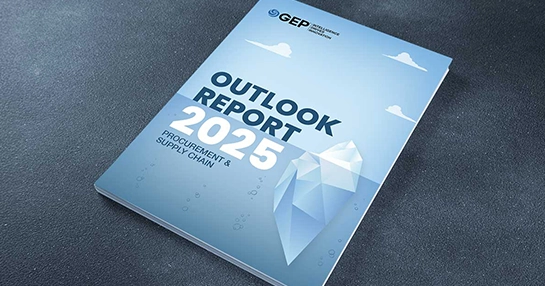
The Winning Procurement Formula: Align Category Strategy with Business Goals
- Category strategy links procurement to business outcomes that matter, from resilience to innovation.
- Technology makes category strategies dynamic, data-rich, and execution-ready.
- Treating every category as a lever for competitive advantage is what separates leaders from cost cutters.
October 06, 2025 | Procurement Strategy 5 minutes read
Sourcing category strategy isn't a jargon; it’s the backbone of how sourcing creates real, measurable value. Categories are where spend actually lives. A strong category strategy is what separates organizations that scramble for short-term savings from those that consistently transform procurement into a driver of competitive advantage.
So let’s unpack what a sourcing category strategy really is, why it matters more than ever, and how leading organizations are using it today to deliver resilience, innovation, and long-term business impact.
Ready to Elevate Your Category Strategy?
See how GEP helps enterprises turn strategy into measurable impact.
What Exactly Is a Sourcing Category Strategy?
A category strategy is simply a structured plan for how an organization will buy, manage, and extract value from a specific group of goods or services.
Instead of looking at spend line by line, procurement zooms out. Similar items are grouped together—IT hardware, logistics, packaging, professional services—into a “category.” Then the real work begins:
- What’s driving cost in this space?
- Which suppliers and markets matter most?
- How do internal demand patterns shape what should be sourced?
- What risks would a disruption expose?
This is the essence of a category strategy. It’s not just asking “what do we need to buy?” It’s about answering “how should we approach this category to generate value far beyond the transaction?”
Why Category Strategy Matters More Than Ever
A decade ago, procurement could get by with being tactical. A handful of good contracts, some spend aggregation, and an ERP system would keep things moving. That world no longer exists.
Today’s supply chains face relentless pressure. Inflation, geopolitical risk, ESG regulations, and supplier instability have turned procurement into a board-level concern. Simply beating down price isn’t enough when resilience and innovation are the new priorities.
A well-defined category strategy matters because it does four things at once:
1. Links procurement to business goals
Whether leadership is prioritizing sustainability, innovation, or speed to market, a category strategy translates those goals into sourcing actions.
2. Drives cross-functional alignment
Stakeholders in Marketing, IT, or Operations care about outcomes, not unit price. A category strategy ensures procurement speaks their language.
3. Anticipates risk and disruption
Semiconductor shortages proved that ignoring supply dynamics is not an option. Strong strategies account for volatility.
4. Builds credibility for procurement
Teams that follow structured category strategies are seen as growth partners, not just cost cutters.
The Core Elements of a Strong Category Strategy
The details may vary by industry, but the fundamentals are surprisingly consistent. Think of them as five interconnected pillars:
1. Spend and Demand Analysis
Clean data is the foundation. Without visibility into what’s being bought, from whom, and why, strategies collapse into guesswork. Leaders invest in cleansing spend data, mapping demand drivers, and identifying patterns that reveal hidden opportunities.
2. Market Intelligence
This is procurement’s edge. Market intelligence means knowing price benchmarks, mapping supply markets, analyzing cost drivers, and understanding supplier economics. It’s how procurement stays ahead instead of reacting when markets shift.
3. Risk Assessment
A good strategy doesn’t ignore risk; it confronts it directly. From geopolitical tensions to supplier concentration, procurement leaders are flagging vulnerabilities early and building mitigation plans into the strategy itself.
4. Business Alignment
Category strategy is not a procurement-only exercise. IT may prioritize speed and innovation, Operations may prioritize resilience, and Finance may prioritize savings. Real alignment comes when strategies reflect all these perspectives and secure stakeholder buy-in.
5. Execution Roadmap
Without execution, strategy is just a document. The best category strategies translate intent into action: sourcing waves, negotiation levers, supplier management models, and clear performance metrics.
Ready to put agentic AI to work in your procurement function?
Get The Agentic AI Playbook to see how leaders are moving from automation to true autonomy.
Beyond Savings: What Category Strategies Unlock
The most significant shift happening today is that category strategies are no longer confined to cost savings. They’re becoming vehicles for broader value creation.
Sustainability :
Packaging strategies now include circular design principles, recycled materials, and supplier diversity targets. Procurement isn’t just sourcing boxes; it’s sourcing impact.
Innovation :
In IT, logistics, and services, partnerships are opening pipelines of innovation. Procurement becomes a collaborator, not just a negotiator.
Resilience :
Dual sourcing, nearshoring, and inventory buffers are no longer tactical fixes. They’re long-term, category-level plays that safeguard continuity.
Risk Hedging :
Commodity categories embed financial strategies like hedging or long-term contracting, protecting margins in volatile markets.
This is why many leaders say category strategy and procurement strategy are inseparable. One defines the other.
Where Technology Fits In
Most leaders know the theory. What they lack is bandwidth. That’s where technology changes the game.
AI-driven platforms cleanse spend data, generate market intelligence, and surface risks in real time. What once took months of analysis can now be done on-demand. With the right tools, category managers can:
- See spend broken down by supplier, region, and contract.
- Track market indices and link them directly to category strategies.
- Receive alerts when supplier risks emerge.
- Monitor execution progress against the roadmap.
This isn’t aspirational—it’s already happening in leading procurement functions. Technology makes category strategy dynamic, integrated, and far more actionable.
What Great Category Strategies Have in Common
Look at organizations that excel, and a few common patterns stand out:
Dynamic, not static
Strategies are reviewed quarterly, sometimes monthly, instead of annually.
Stakeholder-first
They reflect what business partners value, not just procurement priorities.
Data-rich
Clean data underpins every decision. Without it, insights crumble.
Linked to KPIs
Innovation milestones, sustainability targets, and risk reduction sit alongside savings.
Execution-ready
Strategies clearly define who does what, and by when.
The Future of Category Strategy
Category strategies are becoming more predictive, more sustainable, and more integrated across the business. Several trends are shaping the future:
AI-powered forecasting :
Predicting supply constraints or price swings months in advance.
ESG as a default lens :
Embedding sustainability into every category as standard practice.
Cross-industry collaboration :
Consortiums tackling shared challenges, from rare earth sourcing to sustainable logistics.
End-to-end lifecycle thinking :
Linking category strategy to contract management, supplier performance, and even end-of-life disposal.
The shift is clear. Category strategy is not a one-off project; it’s the discipline through which procurement runs the business of supply.
Build a Winning Category Strategy
If procurement wants to stay relevant at the strategy table, category strategy is the ticket. It speaks the language the business understands: structured, data-driven, and outcome-focused.
The organizations winning today aren’t the ones chasing the cheapest supplier. They’re the ones that treat every category as a lever for resilience, innovation, and competitive advantage.
The next time someone asks what procurement delivers beyond savings, point to your category strategies. They’re the playbooks that keep the business aligned, forward-looking, and ready for whatever comes next.
Discover More: Sourcing Software Solutions



